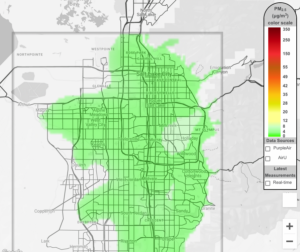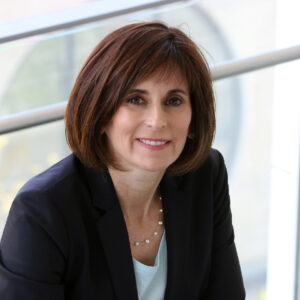 University of Utah air quality researchers along with the Salt Lake County Health Department have received a Smart Cities North America Award for its Air Quality and You project, a network of air quality sensors deployed throughout the county that monitor air pollution in real time.
University of Utah air quality researchers along with the Salt Lake County Health Department have received a Smart Cities North America Award for its Air Quality and You project, a network of air quality sensors deployed throughout the county that monitor air pollution in real time.
The award recognizes the progress North American states and municipalities have made in executing smart cities projects and is given out by IDC Government Insights, which works with local governments making a transition to digital services. The U and Salt Lake County received the award in the “Sustainable Infrastructure” category.
“We’re delighted to receive this award,” said University of Utah chemical engineering associate professor Kerry E. Kelly, who led the team that built the U’s air quality network of sensors. “We are particularly happy about being able to provide actionable information to community members and that the work our team has been undertaking for the past five years is being recognized.”
Last year, engineers from the U’s John and Marcia Price College of Engineering partnered with TELLUS Networked Sensor Solutions (a startup that grew out of the college) and Salt Lake County to visualize air quality measurements at the neighborhood scale in a county-wide map called AirView®. In addition to the U’s roughly 60 AirU sensors, the AirView map also integrates measurements from 100 Purple Air pollution sensors and 10 state air quality monitoring stations.
 Each sensor for the AirView map provides real-time measurements of the air’s concentration of particulate matter. Through color coding on the map, users can understand current local air quality in Salt Lake County. The AQ&U network was built in 2018 by Kelly (pictured), chemical engineering professor (lecturer) Tony Butterfield, School of Computing professors Ross Whitaker and Miriah Meyer and electrical and computer engineering associate professor Pierre-Emmanuel Gaillardon.
Each sensor for the AirView map provides real-time measurements of the air’s concentration of particulate matter. Through color coding on the map, users can understand current local air quality in Salt Lake County. The AQ&U network was built in 2018 by Kelly (pictured), chemical engineering professor (lecturer) Tony Butterfield, School of Computing professors Ross Whitaker and Miriah Meyer and electrical and computer engineering associate professor Pierre-Emmanuel Gaillardon.
“AirView is a tool for people who live, work, and visit Salt Lake County to make them aware of current air quality at their location so they can make informed choices about their health and activities,” said Corbin Anderson, Salt Lake County’s Air Quality Bureau Manager.
For example, the AirView map proved invaluable for health department officials when an apartment building under construction caught fire last February in the Sugar House neighborhood of Salt Lake City, Utah, and smoldered for several days.
Kelly said her researchers plan to add new sensors to the map to help analyze the toxic dust from the bed of the Great Salt Lake as it dries up, and they will have a new sensor platform later this year that will also measure carbon dioxide, ozone, volatile organic compounds, and formaldehyde.